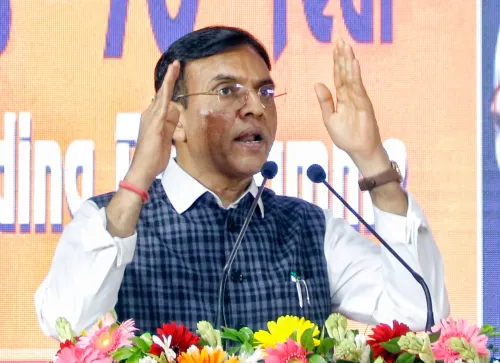Can Microfinance Institutions Bring Formal Credit to the Underserved?

Synopsis
Key Takeaways
- MFIs are essential for financial inclusion.
- Over 300 million people lack access to formal credit.
- 95% of MFI clients are women.
- MFIs are evolving to meet diverse financial needs.
- NABARD supports MFIs in enhancing their capacity.
New Delhi, Nov 13 (NationPress) The government is dedicated to bolstering Microfinance Institutions (MFIs) in promoting financial inclusion, as these entities can significantly contribute to providing formal credit to the underserved, stated M Nagaraju, Secretary of the Department of Financial Services, on Thursday.
Established MFIs have cultivated a committed customer base that has matured financially and may now seek offerings beyond traditional microfinance products.
They are progressively transitioning from a volume-driven growth model to one that is informed by customer insights.
“Over the past 18 months, the number of MFI borrowers has declined by more than 1 crore, with outstanding loans decreasing by over Rs 1 lakh crore, thanks to self-regulatory measures implemented by MFIs,” Nagaraju remarked at an event.
As per Sa-Dhan, the event organizer, approximately 300 million individuals remain outside the scope of formal credit. MFIs can play a critical role in bridging this gap, he added.
Currently, MFIs serve over 6.72 crore customers, with women accounting for 95 percent of this figure, highlighting their essential role in providing credit to low-income and underserved households.
About 91 percent of loans acquired through MFIs are utilized for income-generating activities.
“While NABARD has been assisting farmers in their agricultural pursuits, as they diversify into non-farm activities, MFIs can also facilitate credit for these non-farm income opportunities,” noted Shaji KV, Chairman of NABARD.
Moreover, NABARD will persist in collaborating with MFIs to enhance their capacity through training initiatives, he added.
MFIs are pivoting their strategies as they are now keen on grasping the financial service needs of entire households, which may encompass loans from moneylenders and secured loans against gold, rather than just focusing on individual customers.









